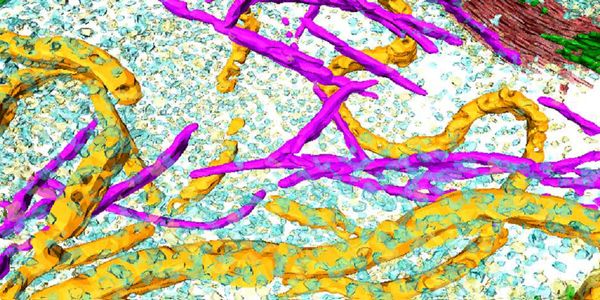Materials Science
Materials Science: The traditional examples of materials are metals, semiconductors, ceramics and polymers. New and advanced materials that are being developed include nanomaterials and biomaterials, etc. The basis of materials science involves studying the structure of materials, and relating them to their properties. Materials Science is vital for developments in nanotechnology, quantum computing and nuclear fusion, as well as medical technologies such as bone replacement materials.
-
Cas9 based therapeutics have the potential to revolutionize the treatment of genetic diseases. However, safe and effective methods for delivering Cas9 protein, gRNA and donor DNA need to be...
Extracellular vesicles (EVs) are lipid bilayer-delimited pieces of cells that are released from the plasma membrane as "ectosomes" and from the endosomal system as "exosomes.&...
Extracellular vesicles (EVs) are nanosized vesicles containing active proteins, lipids, and different types of genetic material such as non coding RNA species, related to the characteristics...
SEP 22, 2020 | 9:00 AM
DATE: September 10, 2020 TIME: 8:00am PDT, 11:00am EDT...
SEP 22, 2020 | 7:00 AM
DATE: September 22, 2020 TIME: 7am PDT, 10am EDT, 4pm CEST Shakers and bioreactors are established versatile systems for cultivating microorganism, plant, and animal cells......
Immunotherapy such as immune checkpoint inhibitor antibodies have revolutionized the treatments for hard-to-treat cancers, with durable responses observed in clinics. However, the overall re...
SEP 16, 2020 | 9:00 AM
Date: September 16, 2020 Time: 9:00am PTD, 12:00pm EDT Harnessing the power of the host immune system to treat diseases has been transformational in patient care. Physiologically relevant ce...
Learning Objectives: 1. Understand the challenges of extracting DNA from human samples for microbiome analysis, and learn about the best technologies for accomplishing this 2. Learn about pr...
Speaker:
Dominic O'Neil, MS, MBA
AUG 27, 2020 | 7:00 AM
DATE: August 27, 2020 TIME: 7:00am PT Novel anti-viral medications, including biologics and small molecule inhibitors, as well as serologic diagnostic tool sets are in urgent demand to fight...
I will tell brief stories of experiences that have shaped my career, generalize the lessons learned, and translate them to three actionable items: (1) be careful with your pronouns, (2) embr...
Natural light-harvesting systems, such as photosynthetic pigment-protein complexes, efficiently transfer energy through space with high efficiency. Ultimately, we would like to understand th...
Recent advances in super-resolution fluorescence microscopy based on single-molecule imaging have led to ~10 nm spatial resolution and exciting science. We are developing new approaches to a...
























